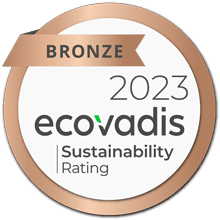Specialist
Former Head at 3P Learning Ltd
Agenda
- Online education market size and structure in Australia
- 3P Learning’s (ASX: 3PL) competitive positioning and monetisation pathway
- Core performance drivers and international expansion opportunities
Questions
1.
On 14th August it was announced that 3P Learning will be acquired by IXL for AUD 1.35 per share, representing a 30% premium to one month volume-weighted average price and representing about an 11 times EV to EBITDA multiple. Can you provide some context around this, or do you have any thoughts around the rationale of this deal?
2.
What do you think the rationale is? Is this IXL trying to boost its own product portfolio, or is this more of a market-entry play for Australia?
3.
Who were the potential buyers for 3P Learning? Was there any vision around the likely player that would be a fit, either from a cultural, strategic, or a product standpoint? Aside from IXL, were there any other players?
4.
Why is this market attractive? Roughly how large is the Australian online education sector, either as a whole or for any specific products that you’re most familiar with?
5.
Is there a way we can size this market? You mentioned there are 10,000 schools. Is there an average budget that is available for online spend per school, and then we multiply it by the number of schools? Is there a way we can gauge the market that’s available to online resource providers?
6.
How do you define mature? Earlier you mentioned that Australia is a mature market. Are you just saying that generally all schools have onboarded some type of Mathletics or maths or literacy product in Australia?
7.
3P has mentioned product launches in the US, but is 3P still launching a lot of products into the Australian markets too, or is the innovation cycle long or is it difficult to develop a new product?
8.
Is the bulk of the online education market reflected in 3P’s core products, so Mathletics and literacy or is Australia’s online education market a lot more diverse? Is the spend heavy here because these are the courses which can be taught online most effectively?
9.
Why has adoption been slow in Australia, or is it that the sales cycle is especially long for government or non-government schools?
10.
When either 3P or any other global-based education resources business wants to expand into Southeast Asia, is it most sensible to buy a local player there and bring it into the portfolio? Is inorganic growth the best way to penetrate these markets, or do you think it is feasible to build these products?
11.
3P management said that the way that the company really builds engagement is to start with the teachers, then with the schools, then with the districts. That’s more for the US, but I wonder how exactly the process works, how long it takes? You mentioned the sales cycle is long, so how long can it be, and how would it differ across different types of schools in Australia?
12.
I think you mentioned that sales are commission-based. How substantial are those commissions?
13.
How long does it take in Australia vs Southeast Asia, from the beginning of the process, from free trial or even the beginning of the initial engagement, all the way to the signing of the contract, and revenue starting to flow in?
14.
You mentioned that growth either comes in from taking share, or from putting out new products. If you were to put out a new product, let’s say you start with Mathletics and then you sell Reading Eggs into that, how does that get priced? Does the subscription just get repriced, or is there a separate subscription?
15.
You mentioned that it’s going to be really difficult for a competitor to unseat 3P. Why is it so embedded? What would the switching cost be for a school? For example, would it take them a month to change the software?
16.
When you think about the degree of price pressure, going forward, does it erode by a percentage point or two per year?
Gain access to Premium Content
Submit your details to access up to 5 Forum Transcripts or to request a complimentary one week trial.
The information, material and content contained in this transcript (“Content”) is for information purposes only and does not constitute advice of any type or a trade recommendation and should not form the basis of any investment decision.This transcript has been edited by Third Bridge for ease of reading. Third Bridge Group Limited and its affiliates (together “Third Bridge”) make no representation and accept no liability for the Contentor for any errors, omissions or inaccuracies in respect of it. The views of the specialist expressed in the Content are those of the specialist and they are not endorsed by, nor do they represent the opinion of, Third Bridge. Third Bridge reserves all copyright, intellectual and other property rights in the Content. Any modification, reformatting, copying, displaying, distributing, transmitting, publishing, licensing, creating derivative works from, transferring or selling any Content is strictly prohibited


